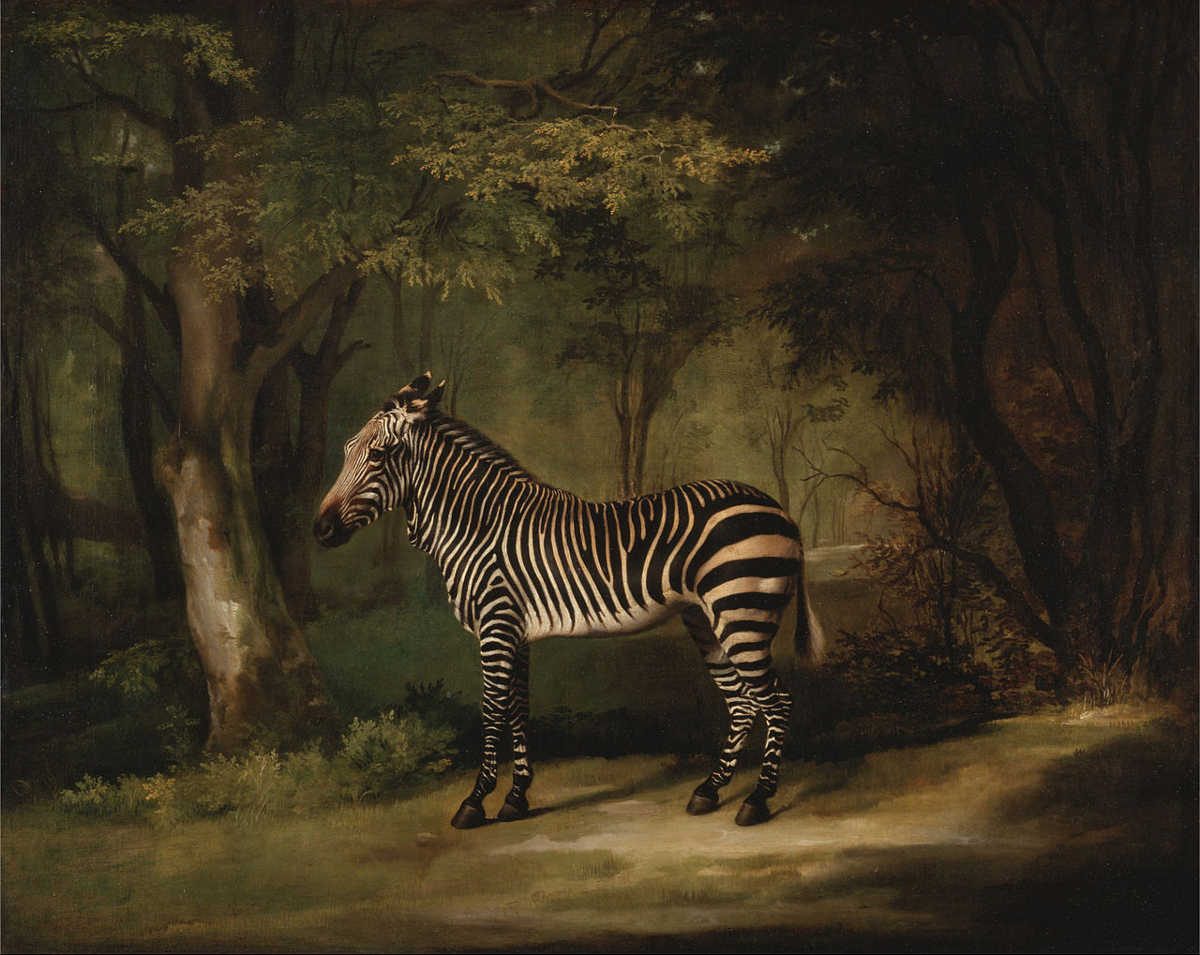
You’d look forlorn too if you were the first zebra in England. The bewildered creature, known as “Queen Charlotte’s she-ass,” departed the Cape of Good Hope “Noah’s-ark fashion” with another zebra in 1762, but her companion died on the voyage. Installed at Buckingham Palace, she “was pestered with visits, and had all her hours employed from morning to night in satisfying the curiosity of the public.” And, inevitably, there were jokes:
A sight such as this surely was never seen:
Who the deuce would not gaze at the A___ of a Q____?
What prospect so charming! — What scene can surpass?
The delicate sight of her M____’s A____?
Though squeamish old Prudes with Invective and Spleen,
May turn up their Noses, and censure the Q____n;
Crying out, “‘Tis a Shame, that her Q____nship, alas
Should take such a Pride — in exposing her A____.”
She was eventually sold to a clockmaker named Pinchbeck, who led her through Yorkshire in a traveling menagerie. She died in April 1773, eleven years after she’d arrived. “Pray do you not think the fate of this animal truly pitiable?” wrote the Rev. William Mason to Horace Walpole. “I should think this anecdote might furnish the author of Heroic Epistles with a series of moral reflections which might end with the following pathetic couplet: ‘Ah beauteous beast! Thy cruel fate evinces / How vain the ass that puts its trust in Princes!'”
(Christopher Plumb, “The Queen’s Ass,” in Samuel J.M.M. Alberti, ed., The Afterlives of Animals, 2011.)
